|
Highlights
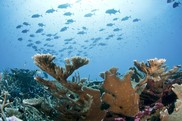
We wrapped up a successful Habitat Month at NOAA. Check out all of the featured information showcasing the connection of healthy coastal habitats to our nation’s communities and ecosystems as our climate changes. Be sure to check out our photo contest winners. Thanks for those who followed along! Contact: Alison Hammer
|
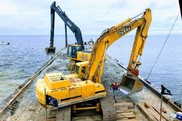
NOAA is recommending nearly $8.3 million in funding to continue 23 ongoing habitat restoration projects through our Community-based Restoration Program. These projects will restore habitat for coastal and marine species in 13 states and territories and provide benefits for communities and the environment. Contact: Jessica Edwards
|
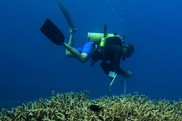
To support our efforts to restore resilient coral ecosystems, NOAA is recommending approximately $1.43 million in fiscal year 2021 funding. The funding will support seven projects through the Ruth Gates Coral Restoration Innovation Grants opportunity. The projects aim to enhance coral resilience and improve the long-term success and efficiency of shallow-water coral reef restoration in a changing climate. Contact: Liz Fairey
|
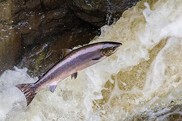
NOAA is recommending nearly $900,000 in funding to implement projects that restore habitat for Atlantic salmon in the Gulf of Maine watershed. The Gulf of Maine distinct population segment of Atlantic salmon is listed as endangered under the Endangered Species Act and is one of nine NOAA Species in the Spotlight. Contact: Natalie McLenaghan
|
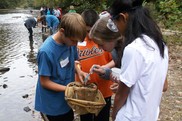
We have recommended 12 new projects to receive a combined total of roughly $1.48 million in FY21 funding as part of the Chesapeake Bay-Watershed Education and Training (B-WET) program. The new projects are based in Pennsylvania, Maryland, Virginia, Delaware, and Washington, D.C. Recommended Chesapeake B-WET FY21 funding, including support for projects continuing from previous years, totals more than $2.6 million. Contact: Shannon Sprague
|
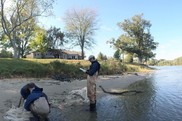
We are pleased to announce that four projects have been recommended for a total of more than $850,000 in funding as part of the Chesapeake Bay Fisheries Research program. The projects will support research into how key Chesapeake Bay fisheries species change their behavior to deal with changing habitat and climate. Funded projects will also improve understanding of how nearshore habitat supports local communities and fisheries in the Middle Peninsula area of Virginia. Contact: Bruce Vogt
|
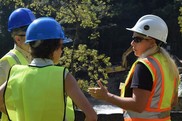
The NOAA Restoration Center works to restore coastal and marine habitat across the country where our fisheries and protected resources need it most. Our support of habitat restoration efforts encompasses more than just funding. We also provide technical support in navigating project planning and design, environmental compliance, project management, monitoring, and more. Contact: Polly Hicks
|
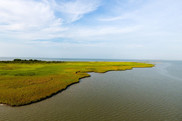
The number of fish and invertebrates that are born and survive each year depends a lot on habitat. A new interactive tool, Fish Production Calculator for Salt Marsh and Seagrass Habitats, can help us estimate how many juvenile fish or invertebrates are produced within these habitats in the northern Gulf of Mexico. NOAA worked with partners at The Nature Conservancy to develop this online tool. Contact: Kara Meckley
|
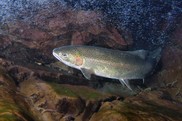
We’re excited to launch an updated version of the Essential Fish Habitat (EFH) Mapper with improved layout, navigation, and functionality. EFH is the habitat needed by managed species to complete their life cycles and it serves a foundational role in sustainably harvested U.S. seafood. The EFH Mapper is an interactive tool for viewing important habitats for managed fish species. Contact: Renee Eaton
|
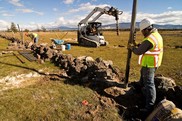
Many species, such as salmon, rely on cool waters to survive during the hot summer months. But with temperatures rising due to climate change, these cold-water habitats are being threatened. In California’s Shasta River, a NOAA-supported habitat restoration project is helping to keep waters cool for salmon. Contact: Bob Pagliuco
|
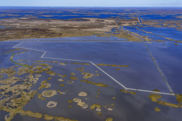
An additional $1.2 million in funding has been approved for an ongoing, NOAA-supported effort to rebuild more than 300 acres of marsh in coastal Louisiana. The Cameron Meadows Marsh Creation and Terracing Project is helping restore the natural buffer that protects nearby communities from damage caused by hurricanes and storm surge. Contact: Jennifer Smith
|
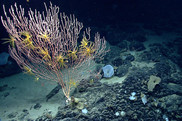
In July, NOAA’s Deep Sea Coral Research and Technology Program staff participated virtually in NOAA Ocean Exploration’s expedition to map and explore the New England and Corner Rise seamounts in the high seas of the North Atlantic. Data collected from NOAA’s deep-ocean exploration and research efforts aids resource managers in developing and evaluating management options for these valuable habitats—on which U.S. fisheries and communities depend. Contact: Dani Weissman
|
|
|
|
|